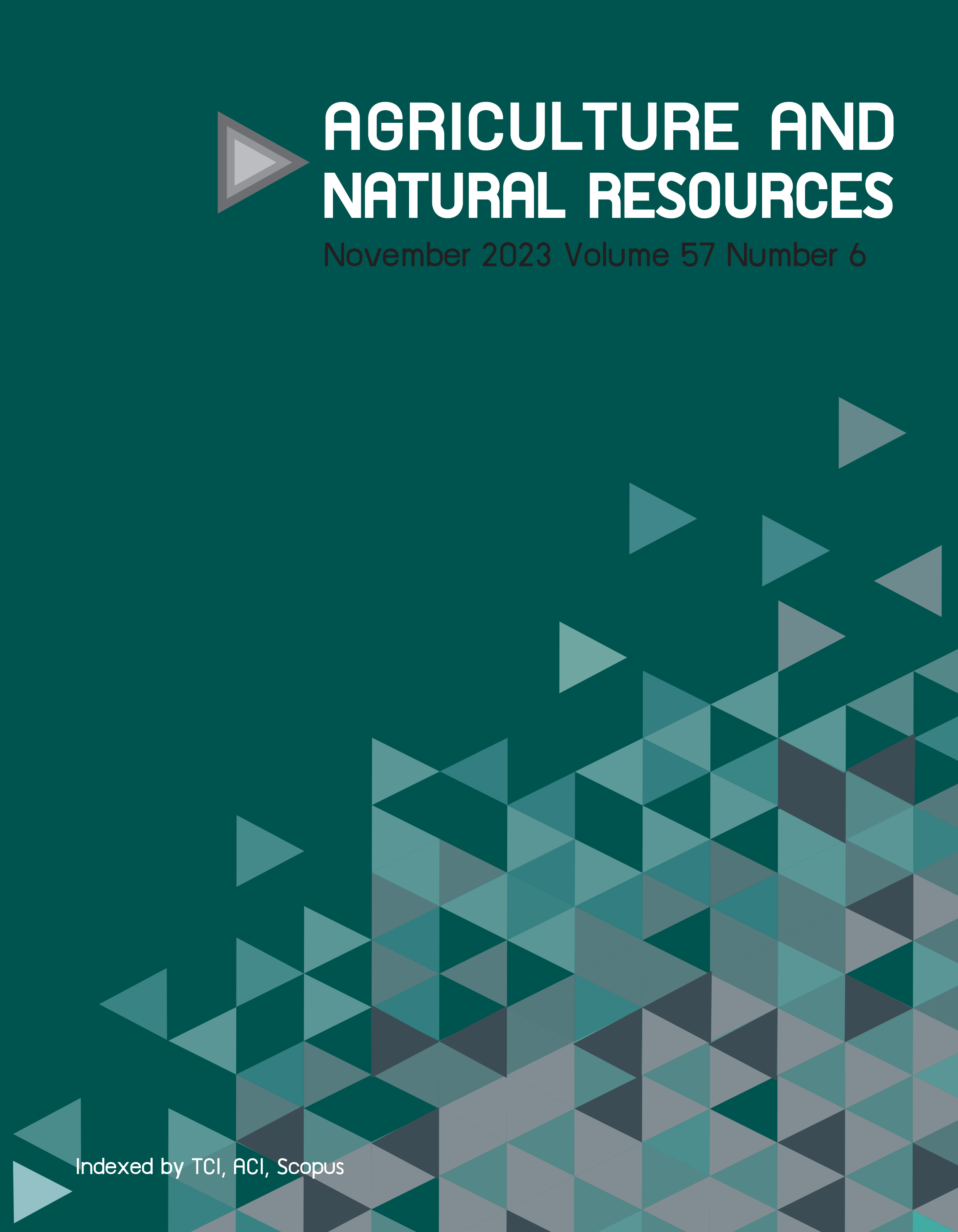Application of low methoxyl pectin powder derived from palmyra palm pulp wash water to enhance toddy palm cake quality
Keywords:
Gel, Low methoxyl pectin, Natural ingredients, Palmyra palm, Waste utilizationAbstract
Importance of the work: One key aspect of the circular economy involves harnessing the potential of waste to create added value. Utilizing products from wastewater collected during the palmyra palm pulp (PPP) washing process might have value and avoid causing
environmental pollution.
Objectives: To recover and characterize pectin from water collected from the PPP washing process and to demonstrate a practical application for the recovered low methoxyl pectin (LMP).
Materials & Methods: The pectin recovery involved washing the fresh PPP with distilled water, separating the pulp, precipitating the pectin in 95% ethanol and subsequently drying and grinding. Then, the pectin powder was characterized and incorporated into the production process of toddy palm cake (TPC) to demonstrate a practical application.
Results: The yield of the recovered pectin was in the range 10–15% weight per weight. Characterization of the pectin powder from PPP confirmed it to be LMP, with a degree of esterification of 32.28 ± 3.63% (mean ± SD). The pectin solution formed a gel with calcium ions, with a minimum concentration of 30 mg/g of pectin. In the absence of pectin, the introduction of calcium had detrimental effects on the TPC properties, resulting in increased hardness and reduced surface porosity. The addition of pectin significantly improved the quality of the TPC reducing the hardness of the TPC sample and increased its springiness, specific volume and surface porosity, surpassing the properties of the controlled sample.
Main finding: Utilizing the LMP in the palmyra palm pulp wash water presented an opportunity to extract pectin in a sustainable and cost-effective manner. The enhancement in the TPC texture highlighted the positive impact of incorporating pectin, leading to a more enjoyable eating experience.
Downloads
Published
How to Cite
Issue
Section
License
Copyright (c) 2023 Kasetsart Universityonline 2452-316X print 2468-1458/Copyright © 2022. This is an open access article under the CC BY-NC-ND license (http://creativecommons.org/licenses/by-nc-nd/4.0/),
production and hosting by Kasetsart University of Research and Development Institute on behalf of Kasetsart University.







